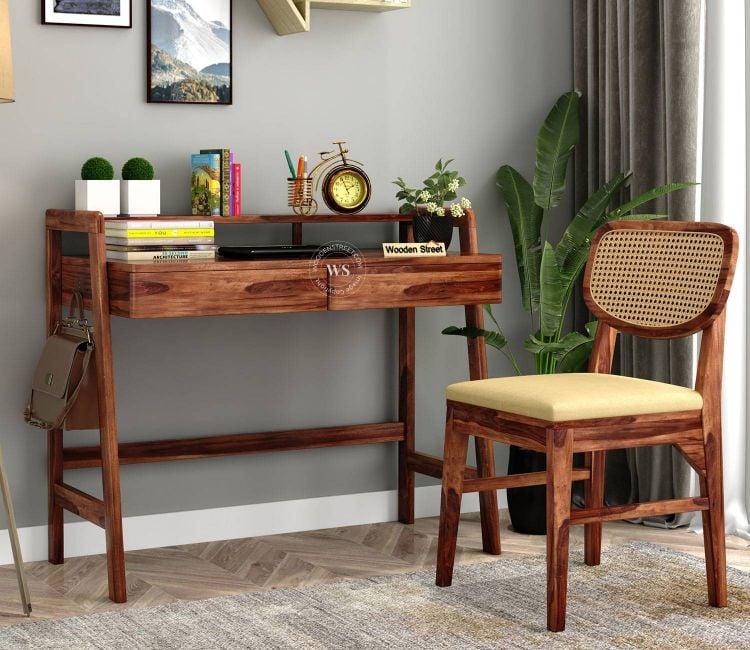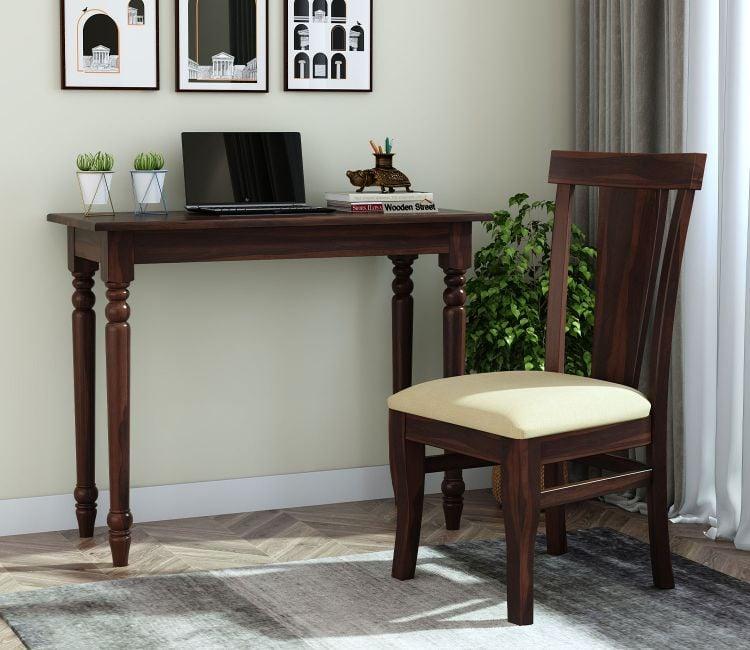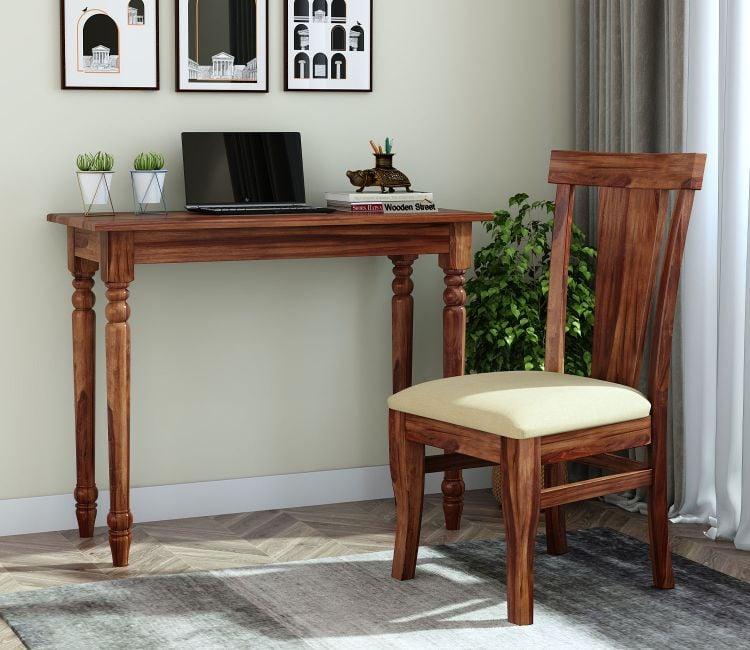A well-designed study table and chair set is more than just furniture—it's a productivity booster that supports focus, organization, and comfort. Whether it's for students, professionals, or home office users, the right setup can make a significant difference in how efficiently tasks are completed. Investing in the right study furniture can help prevent physical strain, improve posture, and create a conducive learning or working environment.
Let’s explore the seven essential features that make a study table and chair combination truly exceptional.
1. Ergonomic Design
One of the most crucial features of a great study table and chair is ergonomic design. Ergonomics ensures that the furniture supports the natural posture of the user, reducing the risk of strain or discomfort during long hours of sitting.
For the Chair:
-
Adjustable height to align with the table.
-
Lumbar support for the lower back.
-
Cushioned seat with breathable fabric.
-
Armrests that reduce shoulder tension.
For the Table:
-
Proper height to avoid hunching over.
-
Enough leg space for movement.
-
A slanted surface option for reading or drawing (optional).
An ergonomic setup promotes better posture, reduces fatigue, and enhances focus.

2. Durable and Sturdy Build
Durability is a sign of a quality study table and chair. Frequent use requires the furniture to be made from robust materials that can withstand daily wear and tear.
-
Materials like engineered wood, solid hardwood, or metal frames offer a solid foundation.
-
The table should be able to hold heavy books, laptops, and study lamps without wobbling.
-
Chairs with strong joints and reliable casters (if it's a wheeled chair) add to the long-term value.
Choose furniture with a scratch-resistant and water-resistant finish to ensure longevity.
3. Adequate Storage Options
A study table should not just be a surface to write or work on—it should also help with organization. Built-in storage compartments make it easy to manage books, stationery, files, and other essentials.
Must-have storage features:
-
Drawers or cabinets for keeping notebooks, stationery, and documents out of sight.
-
Open shelves for displaying frequently used items or decorative pieces.
-
Cable management holes or trays to keep wires organized and prevent clutter.
Efficient storage improves productivity by minimizing distractions and keeping the workspace tidy.
4. Comfortable Seating Experience
The comfort level of the chair plays a major role in maintaining concentration during study sessions or work hours.
What makes a chair comfortable?
-
Padded seat and backrest that don’t cause discomfort over time.
-
Breathable mesh or fabric to avoid sweating, especially in warmer climates.
-
Reclining function and rocking mechanism (optional) for better relaxation during breaks.
Some chairs come with swivel and caster wheels, which make movement easier, especially in larger study spaces.
5. Appropriate Size and Space Efficiency
Size is often overlooked but is a critical aspect, especially in smaller rooms or apartments.
-
The study table should be large enough to hold a laptop, books, and a desk lamp but not so big that it clutters the room.
-
The chair should easily slide under the table when not in use to save space.
-
Opt for wall-mounted or foldable tables in compact rooms for better space management.
Always measure your room space before purchasing to ensure a perfect fit.
6. Aesthetic Appeal and Style
While functionality is key, style matters too. A well-designed study table and chair can enhance the look of a room and contribute to a pleasant working environment.
-
Choose colors and finishes that match your interior décor.
-
Wooden finishes offer a warm, classic look.
-
Modern minimalist designs provide a clean and organized feel.
Look for a balance between aesthetics and practicality—furniture that’s both attractive and useful.
7. Easy Maintenance and Cleaning
Furniture that is easy to clean helps maintain hygiene and extends its life. Since the study area is frequently used, it tends to gather dust and clutter easily.
-
Look for surfaces with laminated or matte finishes that are easy to wipe clean.
-
Chairs with removable and washable cushions make cleaning hassle-free.
-
Avoid fabric that stains easily or retains dust.
Low-maintenance furniture keeps the study environment healthy and inviting.

Bonus Tip: Customization and Flexibility
In some cases, especially for growing children or multifunctional spaces, customizable tables and chairs are a great investment.
-
Height-adjustable tables and chairs grow with your child or adapt to different users.
-
Modular tables with detachable components allow reconfiguration for various tasks like reading, writing, or crafting.
Flexibility ensures that your study setup remains useful as your needs evolve.
Conclusion
Choosing the right study table and chair can dramatically influence your learning or work experience. Whether you’re a student preparing for exams or a professional working from home, paying attention to these seven essential features—ergonomic design, durability, storage, comfort, appropriate size, aesthetics, and ease of maintenance—will ensure that your workspace is both productive and pleasant.
Remember, the best study furniture is one that supports your body, boosts your efficiency, and fits seamlessly into your room’s layout and style. With the right setup, you’ll find it easier to focus, stay organized, and enjoy every moment spent at your desk.
